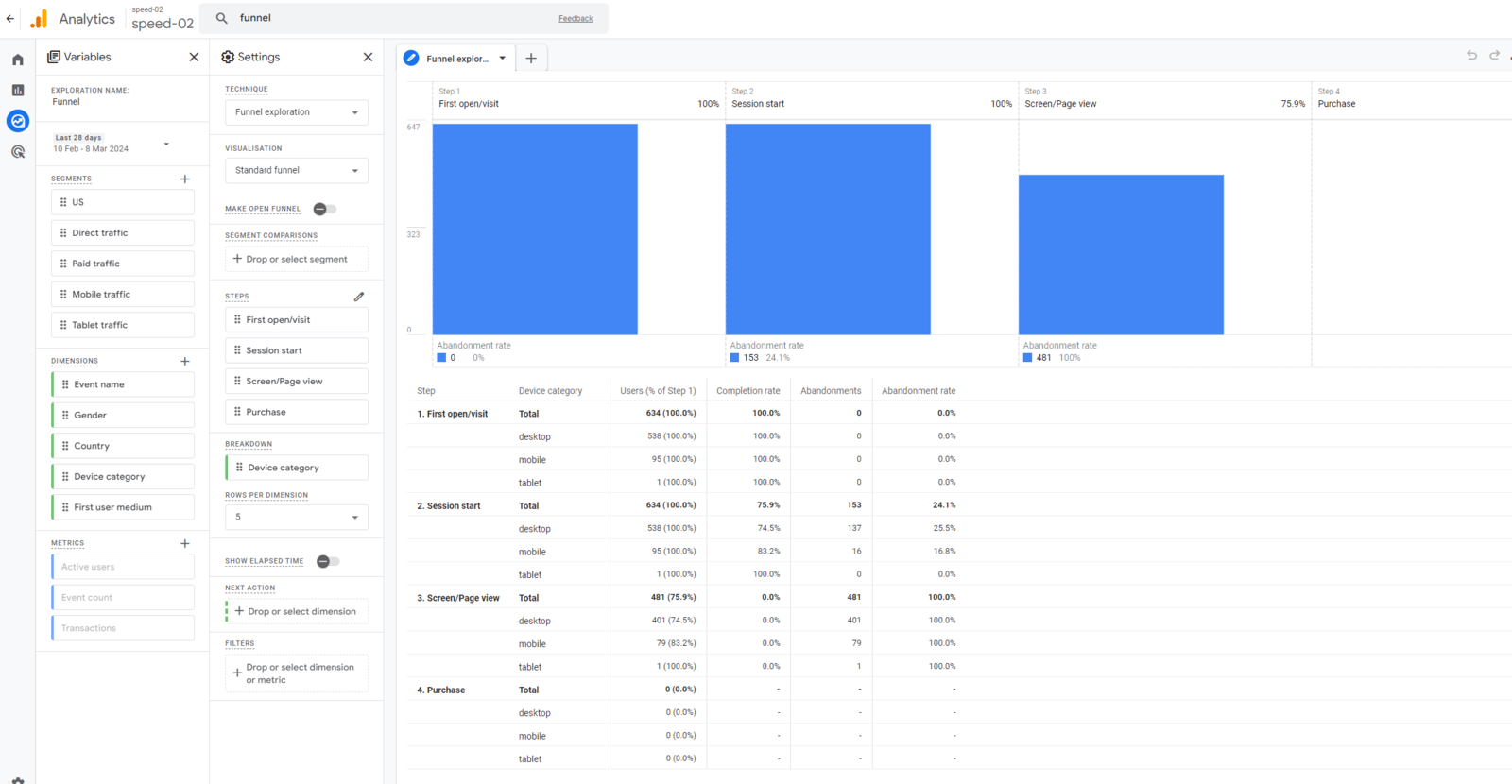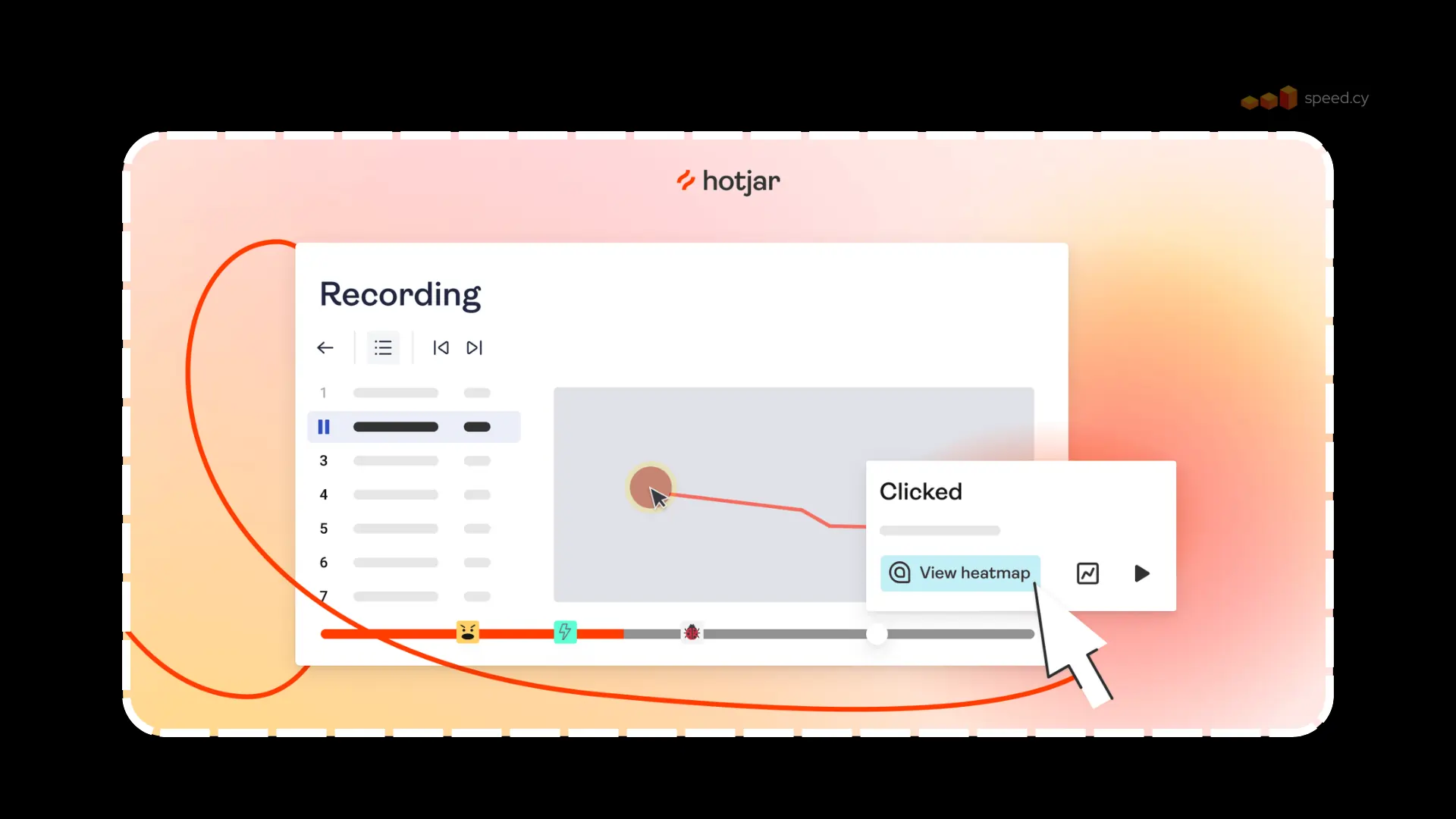Goal conversion rate is one of the most important metrics to track in Google Analytics Four (GA4) if you want to understand how well your website is converting visitors into customers or leads. This guide will explain what goal conversion rate is, how to calculate it in GA4, and most importantly – provide a framework for how to investigate and optimize your goal conversion rate using GA reports and tools like Hotjar.
What is Goal Conversion Rate?
In the simplest terms, goal conversion rate shows the percentage of sessions on your site that resulted in a goal completion.
- Goals are defined actions and outcomes you want visitors to complete, like filling out a contact form, signing up for a trial, making a purchase etc.
- Sessions refer to visits to your website within a given time frame.
So if you had 100 sessions to your site, and 10 of those sessions resulted in a goal conversion, your goal conversion rate would be 10%.
Goal conversion rate helps you measure how effective your website is at turning visitors into leads and customers. If the rate is low, it means you need to optimize your site to remove friction in the conversion process.
How to Calculate Goal Conversion Rate in GA4
While GA4 doesn’t have a single metric called “Goal Conversion Rate” in the same way Universal Analytics did, here’s how to find and analyze equivalent information:
1. Define Your Conversions:
- In GA4, conversions are based on events you’ve marked as important. Make sure you’ve configured the events that represent your desired user actions (e.g., purchase, form submission, etc.).
2. Explore Your Conversions:
- Explorations: Navigate to Explore and select the Free-form or Funnel Exploration techniques. These allow you to create reports or visualizations showing how many users completed your conversion events.

3. Calculate Conversion Rates Manually
- Within your Explorations, you’ll get the number of times your conversion event was triggered.
- To calculate a conversion rate, you’ll need to divide this number by the total number of relevant users or sessions for the same time period. The way you determine this denominator will depend on the specific conversion you’re analyzing.
Example:
Let’s say you want to analyze the conversion rate of a purchase event:
- Explorations: Shows you had 500 completed purchase events in the last month.
- Users Report: Shows you had 5000 active users on your site in the last month.
- Calculation: 500 / 5000 = 0.1 (which equals a 10% conversion rate)
Important Notes:
- No Universal Metric: GA4’s focus on events and explorations means you’ll need to calculate some conversion rates directly.
- Flexibility: This approach allows you to calculate conversion rates on a much more granular level for various segments and events within GA4.
Now that you know how to find your goal conversion rate, let’s talk about how to analyze and optimize it.
Investigating Goal Conversion in Google Analytics 4
When you have a low conversion rate, the first thing to do is investigate why visitors aren’t converting as you expect. GA4 provides several useful tools to uncover potential issues.
Using Funnel Exploration
GA4 doesn’t have an exact equivalent to the “Goal Flow Report”. Instead, you’ll utilize the Funnel Exploration report:
- To find it, go to Explore > Funnel Exploration.
- Create a Funnel: Define the steps involved in your desired conversion process. These steps are based on events you’ve already set up in GA4.
- Analyze the Funnel: The report visualizes the flow of users through your funnel, showing the percentage of users that continue to the next step and where the biggest drop-offs occur.
Here you can see each step of your goal funnel and the percentage of users who dropped off at each point rather than continuing to convert.

Key Points:
- Conversions are Events: In GA4, conversions are based on events you’ve marked as important. Make sure you’ve properly configured these events.
- Funnel Exploration is Flexible: This tool allows you to create custom funnels, unlike the rigid Goal Flow report in Universal Analytics. You can investigate both linear and non-linear conversion journeys.
Additional Tips:
- Consider Other Reports: The “User Acquisition” and “Traffic Acquisition” reports in GA4 can provide valuable insights about where users might be entering your funnel, which may help pinpoint issues.
- Segment Your Analysis: Use GA4’s segmentation features to dig deeper into the behavior of specific user groups (e.g., based on device type, traffic source, or location).
Applying Segments
Segments allow you to slice your analytics data to see how different groups are converting. This can spotlight issues that only some visitors are facing.
Some useful segments are:
- Traffic source – See conversion rates by source like organic search, social media etc. If one is lower, focus efforts there.
- Device – Are mobile visitors converting less than desktop? Optimize accordingly.
- Landing page – Find your top entry pages and optimize those first.

Segments help you prioritize which visitor groups and acquisition channels to focus conversion optimization efforts on first.
Understanding Visitor Intent and Motivations
To meaningfully increase conversion rate, you need to understand your visitors’ intent and motivations when coming to your site. This informs what changes will actually convince them to convert.
Identify Top Entry Pages in GA4
While there’s no exact equivalent to the “Landing Pages” report that we got used to in the old Universal Analytics, here’s how to find your top entry points in GA4:
- Exploration Analysis: Go to Explore > Analysis Hub. Create a new exploration.
- Dimensions: Add “Landing Page” as a dimension.
- Metrics: Include metrics like “Users” and “New Users” to understand traffic volume and new visitor acquisition. Consider also adding “Engagement Rate” and “Average Engagement Time” to gauge the quality of initial interaction.
- Sort and Filter: Sort the table by the relevant metrics to see which landing pages attract the most traffic, new users, or have the highest engagement. You can filter to refine your analysis (e.g., focus on specific traffic sources).
Optimizing Top Entry Pages
Your advice on optimization still holds true! Key principles for effective landing pages:
- Strong Headline: Grab attention quickly with a clear and relevant headline.
- Call-to-Action Above the Fold: Make your desired user action prominent without the need to scroll.
- Concise and Compelling Content: Clearly communicate the value proposition of your page.
Poll Visitors On-Site
Tools like Hotjar let you add polls and surveys on your site to ask visitors directly about their intent and interests.
You can poll visitors on:
- How they found your site
- What they were looking for
- Why they are visiting the page
- What content they find valuable
This qualitative data helps create visitor personas and inform conversion optimization priorities.
Finding Conversion Barriers
Once you know visitor motivations, the next step is finding friction points that are blocking them from converting.
Identifying High Drop-off Pages in GA4
GA4 doesn’t have a direct “Exit Pages” report. Here are a couple of approaches to find equivalent information:
1. Exploration Analysis:
- Navigate to Explore > Analysis Hub and create a new exploration (Free-form works well).
- Dimensions: Drag “Page Title and Screen Class” into the Rows section.
- Metrics: Add “Exits” to see the volume of exits on each page. Consider adding “Bounce Rate” and “Average Engagement Time” to understand the nature of those exits.
- Sort: Sort by “Exits” in descending order to see the pages with the most exits. Look for patterns and anomalies across metrics (e.g., high exits AND high bounce rate indicate a potential problem page)
2. Funnel Exploration
- If you have funnels set up, analyze your Funnel Exploration report (Explore > Funnel Exploration)
- Each step in the funnel will show you what percentage of users move to the next step and what percentage drop out. This helps identify significant drop-off points in the conversion flow.
Analyzing Drop-Off Pages
Your suggestions for common problems are spot on! Here’s what to look out for:
- Confusing Navigation or Design: Poor navigation or a cluttered design can discourage users from exploring further.
- Slow Page Speed: Long load times contribute to bounces and exits. Test your page speed using tools like PageSpeed Insights: https://developers.google.com/speed/pagespeed/insights/
- Lack of Engaging Content: If content is irrelevant to the visitor or doesn’t answer their search intent, they’re likely to leave.
- Technical Issues: Errors or broken functionality can frustrate users and lead to exits.
Additional Tips
- Use Segmentation: Segment your analysis by traffic source, device type, or other parameters to see if specific drop-off patterns emerge for certain types of users.
- Heatmap Tools: Consider tools like Hotjar to understand in-page behavior and see where users may be struggling.
Use Hotjar Recordings
Hotjar session recordings visually show real visitor behavior on your site like clicks, scrolling, and cursor movements.
Watch recordings on high drop-off pages to see how visitors are interacting. This makes it easy to spot usability problems and conversion blockers.
For example, you may notice visitors looking for a certain UI element but not seeing it or trying to scroll but getting stuck. These actionable insights let you pinpoint exactly how to improve the page design and conversion rate.

Optimizing with Conversion Hooks
The final step is researching what would motivate and convince visitors to convert, then adding those conversion hooks to your site.
Email Surveys to Converted Users
Email converted visitors asking what ultimately convinced them to convert.
Ask questions like:
- What was the deciding factor that made you convert?
- Were there any hesitations or barriers originally?
- What could we have done better to get you to convert faster?
This gives you the visitors’ own perspectives on what your site could add or improve to persuade more people.
Make Changes Based on Feedback
Use the qualitative insights from polls, recordings, and surveys to guide high-impact changes.
For example, you may find adding testimonials, improving page speed, simplifying the navigation, or highlighting USPs. USP stands for Unique Selling Points (or Unique Selling Propositions). Which helps convince more visitors to convert based on their feedback.
Prioritize changes that address the biggest conversion friction points first. Continuously test new optimization ideas using A/B testing and iterate based on the data.
Summary and Key Takeaways
Improving conversion rate takes in-depth analysis and continuous optimization. The key steps covered in this guide were:
- Learn how to calculate goal conversion rate in GA4
- Use reports like goal flow and landing pages to investigate drop-offs
- Understand visitor intent through on-site polling and surveys
- Identify barriers through exit page analysis and Hotjar recordings
- Add conversion hooks based on feedback from converted users
Focusing your efforts on high-traffic pages and priority segments will have the biggest impact.
Keep optimizing and testing new ideas over time. Small changes can have a big cumulative effect on converting more of your website visitors into customers.
What tips do you have for improving goal conversion rate in GA4? Let me know in the comments!





